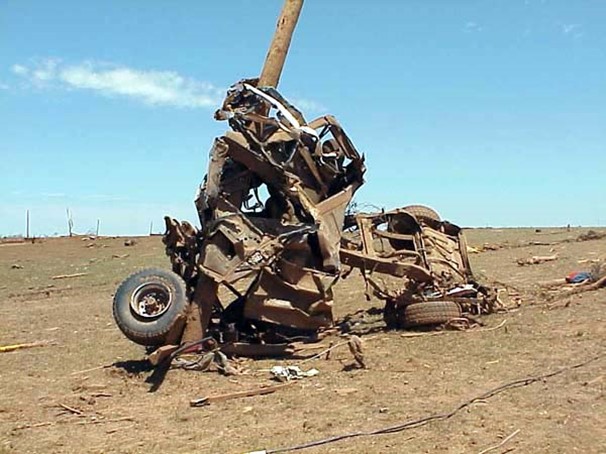
Credit: National Oceanic and Atmospheric Administration National Weather Service staff, public domain, via Wikimedia Commons
Spring is tornado season, so let’s take a look at a few twister myths and how the truth about them can keep you safe.
The first myth is that spring is tornado season! While it’s true more than half of those in the Northern Hemisphere do occur in April and May, they can occur in any month of the year.
It’s also a myth that tornadoes never strike the same place twice. Some places have had three in one day. Others have had one on the same day in three consecutive years.
It’s a myth that tornadoes won’t cross bodies of water or form in mountains or cities. While that’s less likely, they’ve hit several urban areas in the southern U.S. and jumped over the Mississippi River.
It’s a myth that you can outdrive a tornado in your car. Tornadoes can travel 60 miles an hour or more and move unpredictably. Your car could be picked up by one of them.
Parking under a bridge or overpass could actually be more dangerous because those structures can channel and intensify the wind and debris.
If a tornado is coming toward your car, the safest thing to do is get out, move away and find shelter in a ditch, or lying face down in a flat field.
Another myth is that air pressure will explode a house’s windows outward. It’s actually flying debris carried by the wind that’s the most dangerous part of a twister—and that’s what breaks windows.
So don’t worry about opening them; that’s precious time you could use taking shelter.
You can find more tips to stay safe during a tornado on EarthDate.
Background
Synopsis: Every year, more than 1,200 tornadoes touch down in the United States, with more than half occurring in the months of April and May. Most develop in the central and eastern United States, but they can occur in all 50 states, Asia, Australia and South America. Twister folklore has risen up through generations, resulting in both wise practices and dangerous misconceptions. Here are some recent recommendations to help set the record straight.
- In ED-257 Tornado Genesis, we described the atmospheric conditions that favor the formation of tornadoes and their most common location and seasonal timing.
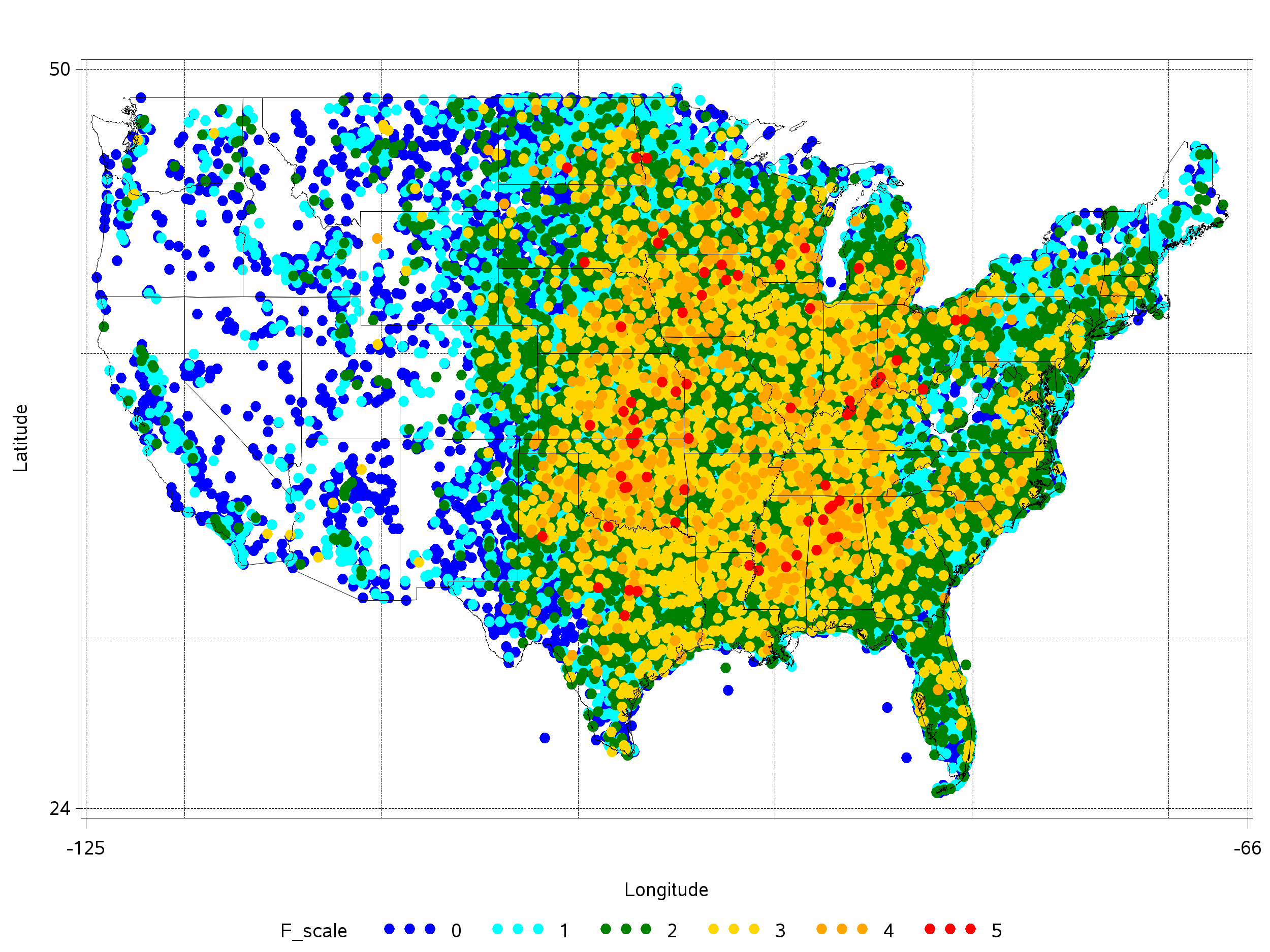
All tornadoes in the continental United States, 1950–2013, plotted by midpoint, highest F scale in warmer colors. Data from NOAA Storm Prediction Center.
Credit: Tertius51, via Wikimedia Commons- Tornadoes tend to occur in different parts of the United States during different seasons.
- Tornadoes also develop on the Indian subcontinent, where the largest number of deaths occur, as well as in Australia, New Zealand and South America.
- Here are some misconceptions that have been debunked by engineers and scientists.
- Tornadoes only happen during tornado season.
- Tornadoes can occur in any month, one of the most destructive was in December 2021.
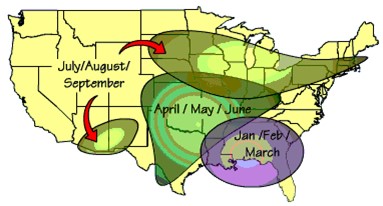
Tornadoes are more common in certain parts of the United States during different seasons, but, as climate changes, these regions may be shifting.
Credit: Passport to Knowledge
- Tornadoes can occur in any month, one of the most destructive was in December 2021.
- Tornadoes never strike the same place twice.
- A church in Guy, Arkansas, was hit by three tornadoes on the same day.
- Cordell, Kansas, saw three tornadoes each on May 20 in 1916, 1917 and 1918.
- You can see and hear a tornado before it hits.
- Heavy rain clouds can obscure the sight of a tornado as it approaches while thunder can muffle the freight train roar until it is too late.
- Tornado wind is the most dangerous element of a twister.
- It is the debris entrained in the winds that does the most damage as it swirls through the air and crashes back to Earth.
- Unless a tornado is coming straight toward you, you don’t need to take shelter.
- Tornadoes may move over the ground in unpredictable patterns.
- Tornadoes can’t pass through tall buildings, mountains or over bodies of water.
- Tornadoes are less likely to form in the mountains or in urban areas, but that won’t stop them. They can be more than two miles high.
- Twisters have hit cities like Atlanta and crossed the Mississippi River.
- You can outdrive a tornado.
- Tornadoes can travel at more than 60 mph (100 km/h) over the ground.
- Tornado winds can lift your car skyward in their swirling winds that range from 110 to 300 mph (180–486 km/h).
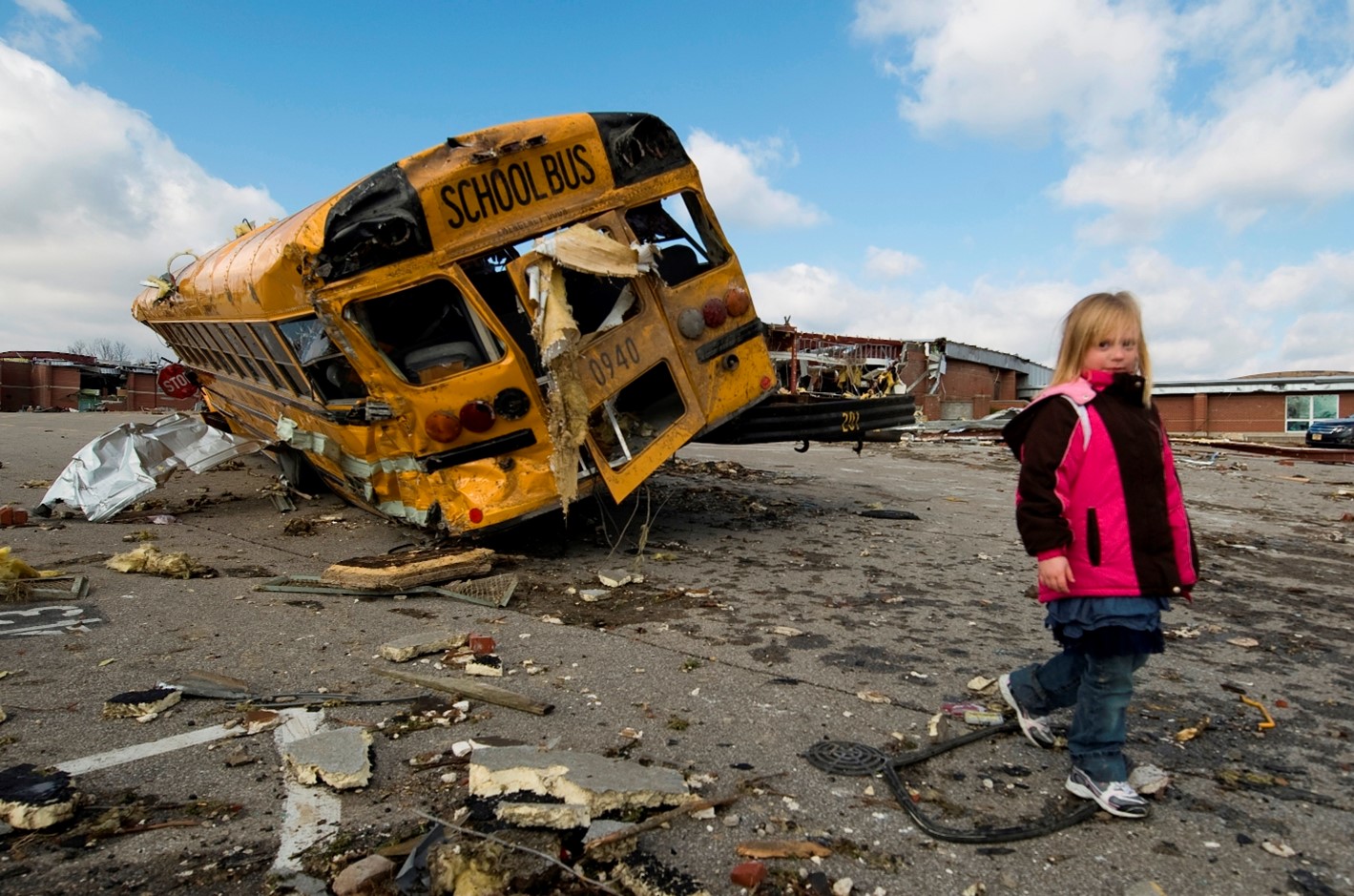
A child walks the parking lot of her elementary school in Henryville, Indiana, Saturday, March 3, 2012. The school and much of her town was devastated by a large tornado less than the day before.
Credit: The National Guard, public domain, via Wikimedia Commons
- If driving, take shelter under an overpass.
- Bridges and overpasses may create a wind tunnel effect, posing more danger by focusing gusts and flying debris into the opening.
- Bridges may be unstable and might collapse in extreme winds.
- Open windows to equalize pressure in your home so they don’t explode.
- Your house isn’t that airtight—windows break from debris impacts not from explosions, so don’t waste precious time opening them.
- Leaving garage doors open allows winds to get under the garage roof, possibly lifting it off and tearing away other sections of the roof.
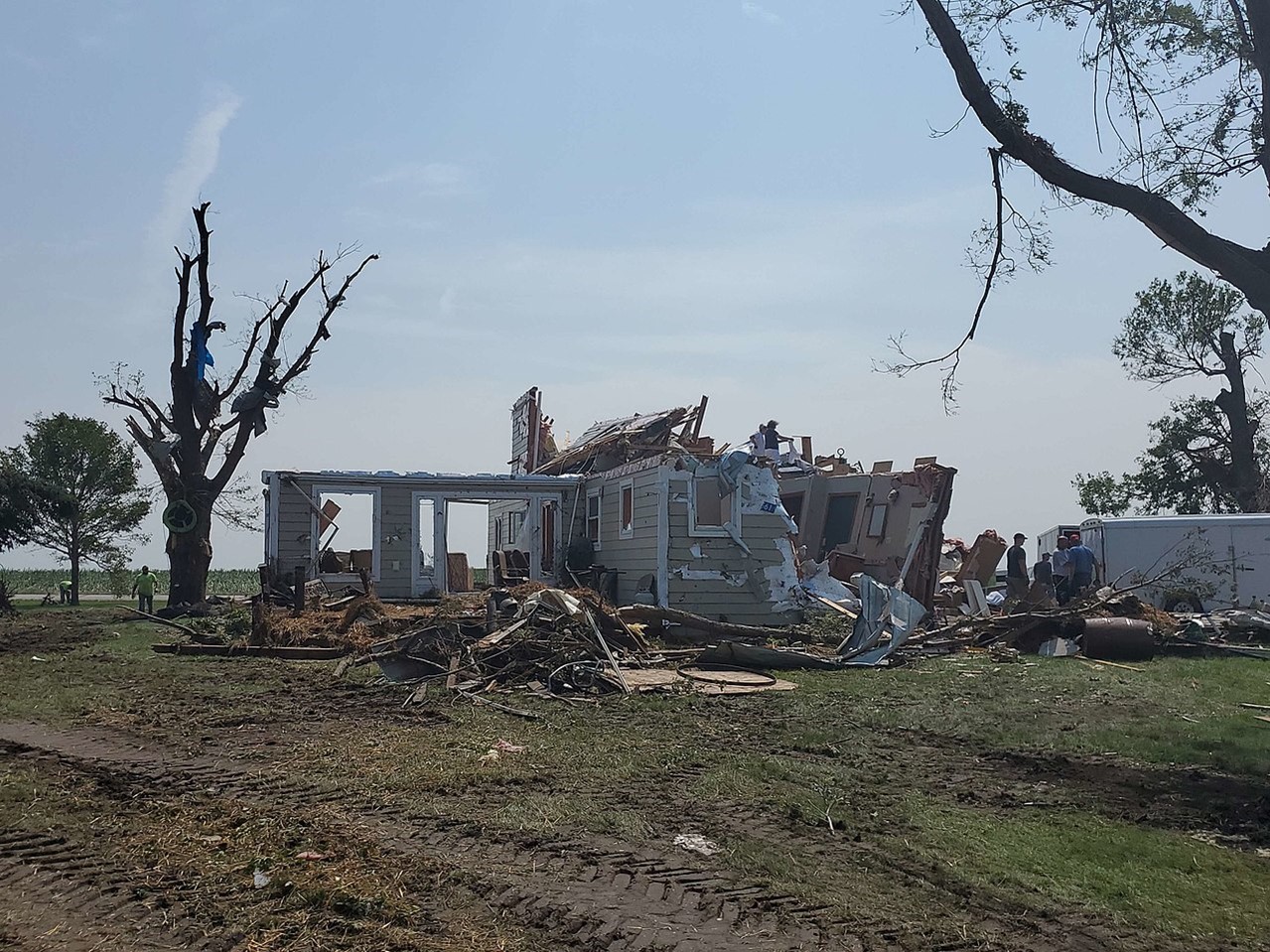
This house in Lake City, Iowa, was destroyed by an EF3 tornado on July 14, 2021.
Credit: National Weather Service Forecast Office in Des Moines, Iowa, public domain, via Wikimedia Commons
- Shelter in the southwestern corner of your basement.
- While many tornadoes move to the northeast, tornado debris can move in any direction.
- Mobile homes attract tornadoes.
- Mobile homes are easier for tornadoes to lift into the air and blow apart than a standard home, so they are clear indicators of a tornado, but they do not attract tornadoes.
- Tornadoes only happen during tornado season.
- Here are reliable tornado safety tips to keep in mind.
- Plan ahead for your property and your family.
- Create an emergency kit that is portable and stocked with a battery operated radio, flashlight, batteries, chargers, emergency numbers, food, petfood, water, critical medications and first aid supplies for several days.
- Prepare a tornado safety plan regarding where your family will shelter and ensure all family members know what to do in the event of a warning.
- Check with your kids’ schools and child care facilities to understand their tornado emergency plans; you may be separated from them.
- Check your homeowner’s insurance to understand how your policy covers tornado damages.
- Survey your home and yard for loose debris or dead branches that could become projectiles and secure or remove them.
- Know how to turn off all utilities that may develop leaks or create sparks in the aftermath of a twister.
- Maintain awareness of Tornado Watches (tornado possible) and Tornado Warnings (tornado has been observed on the ground).
- You can opt into the National Oceanic and Atmospheric Administration (NOAA) and FEMAs’ Emergency Alert System to get smartphone alerts.
- Tornadoes tend to arise from dark or green low-lying clouds with hail.
- In selecting a tornado shelter, your goal is to get as far underground as possible or to go to the most interior room, hallway, or stairwell of your house to put as many sturdy barriers as possible between flying debris and your family.
- Move away from windows to avoid flying glass.
- Position yourself under a staircase, the strongest beam you can find or duck under a table.
- Think about what is on the floor above your shelter. Take care not to position yourself below heavy objects like a piano or refrigerator that could fall on you through a damaged floor.
- Cover yourself with mattresses and blankets and don’t forget your pets!
- If you are driving, you need to park your car and get away from it, as it can easily be lifted by tornadic gusts. Do not try to outrun a tornado in a vehicle.
- If you can’t find shelter in a roadside building, lie face down in a flat field and cover your head.
- Do not park in traffic lanes where other cars or emergency vehicles can plow into your car in extreme low visibility conditions.
- Do not park under an overpass where winds and debris may be accelerated through the opening.
- If you are in a mobile home, even if it is tied down, leave it.
- Take shelter in a nearby sturdy building away from windows if possible.
- Plan ahead for your property and your family.
- Think ahead, have a plan, stay alert, and keep your family safe when tornadoes threaten.
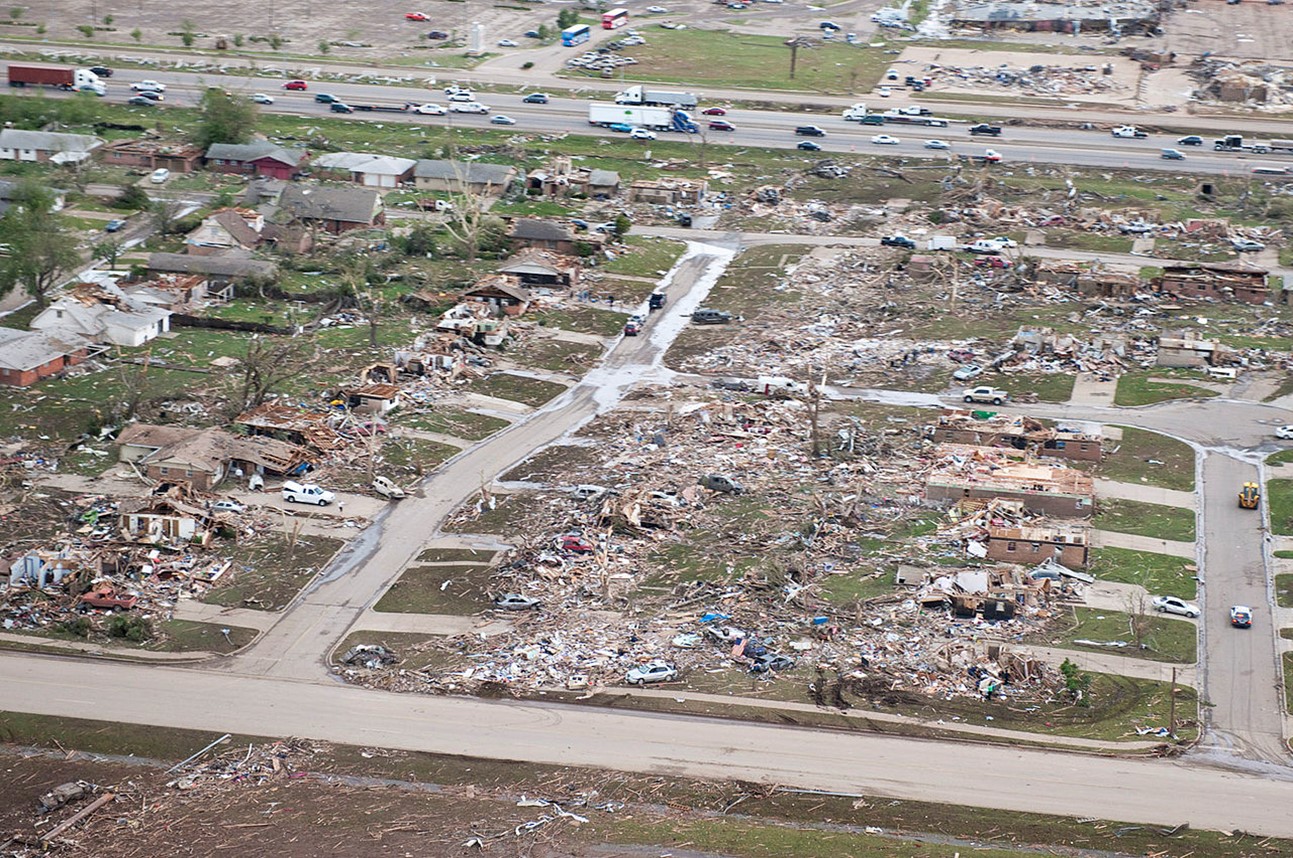
This Oklahoma National Guard photo provides an overhead view of damage from an F5 tornado in Moore, Oklahoma, on May 21, 2013. This is the same community where the pickup truck was wrapped around the utility pole 14 years earlier (first photo in this episode).
Credit: Maj. Geoff Legler, public domain, via Wikimedia Commons

